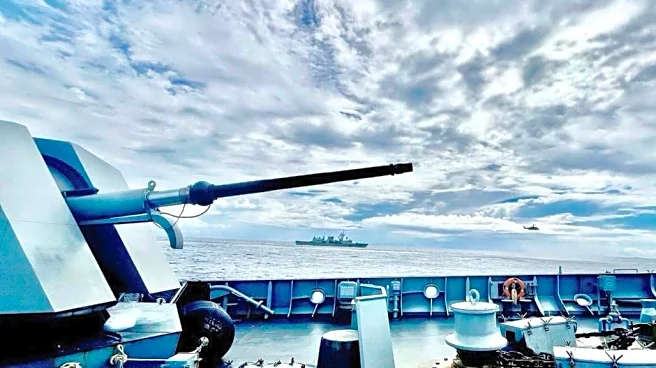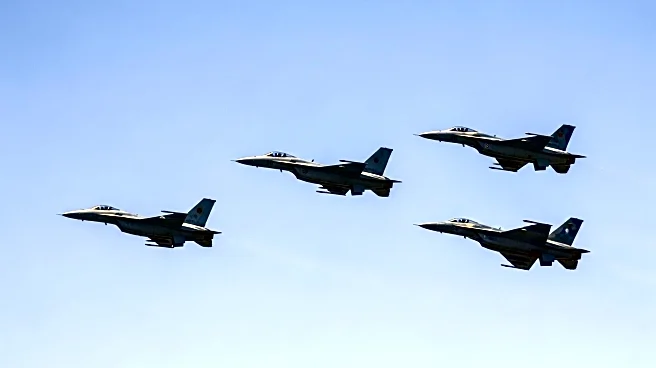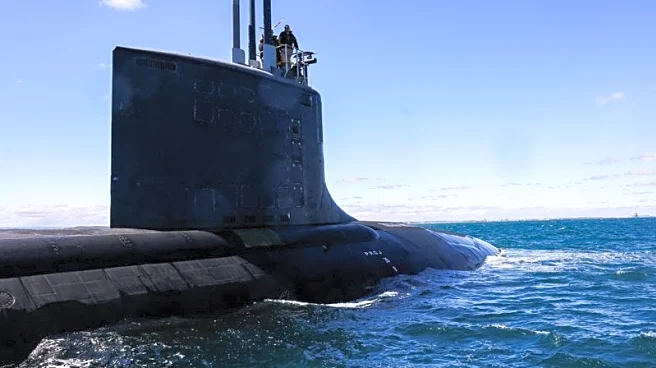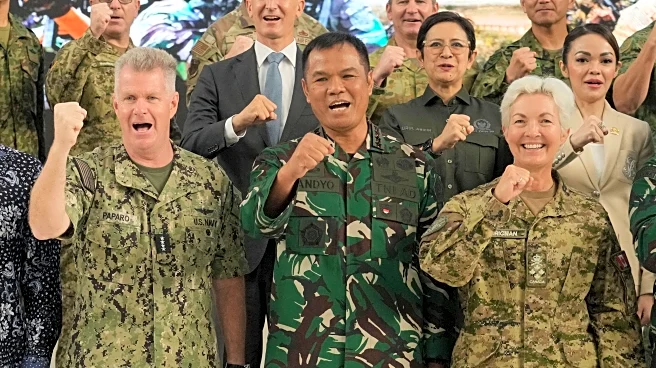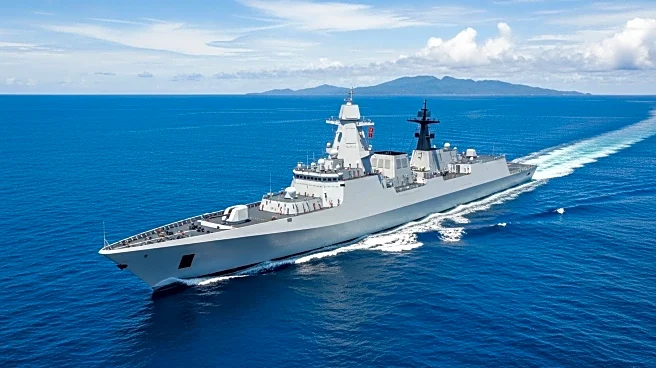What's Happening?
The USS Ohio, one of the U.S. Navy's four guided-missile nuclear submarines, recently made a notable appearance in Brisbane, Australia. This visit, part of its scheduled deployment to the Western Pacific, coincided with the 80th anniversary of Victory in the Pacific Day, a significant historical event marking the end of World War II. Brisbane, historically a major submarine hub during the war, hosted over 70 U.S. Navy submarines, reinforcing the longstanding naval relationship between the United States and Australia. The Ohio-class submarines, the largest ever constructed for the U.S. Navy, were initially designed during the Cold War to counter Soviet submarine capabilities. These submarines were equipped with Trident submarine-launched ballistic missiles, providing the U.S. with significant strike capabilities. Post-Cold War, the U.S. reduced its nuclear arsenal, converting some Ohio-class submarines into SSGNs, capable of carrying Tomahawk land attack missiles.
Why It's Important?
The presence of the USS Ohio in Australia underscores the strategic military partnership between the United States and Australia, particularly in the Indo-Pacific region. This visit not only commemorates historical ties but also serves as a modern-day deterrent to potential adversaries, showcasing the U.S. Navy's advanced capabilities. The Ohio-class submarines, with their significant payload capacity, play a crucial role in maintaining global maritime security and stability. For Australia, hosting such a vessel reinforces its strategic importance as a key ally in the region, potentially influencing regional security dynamics and defense collaborations.
What's Next?
The continued deployment of U.S. naval assets in the Indo-Pacific region is likely to prompt reactions from other regional powers, potentially influencing diplomatic and military strategies. The U.S. and Australia may further strengthen their defense cooperation, possibly leading to joint exercises or strategic dialogues. Observers will be watching for any shifts in regional alliances or military postures in response to this demonstration of naval power.


